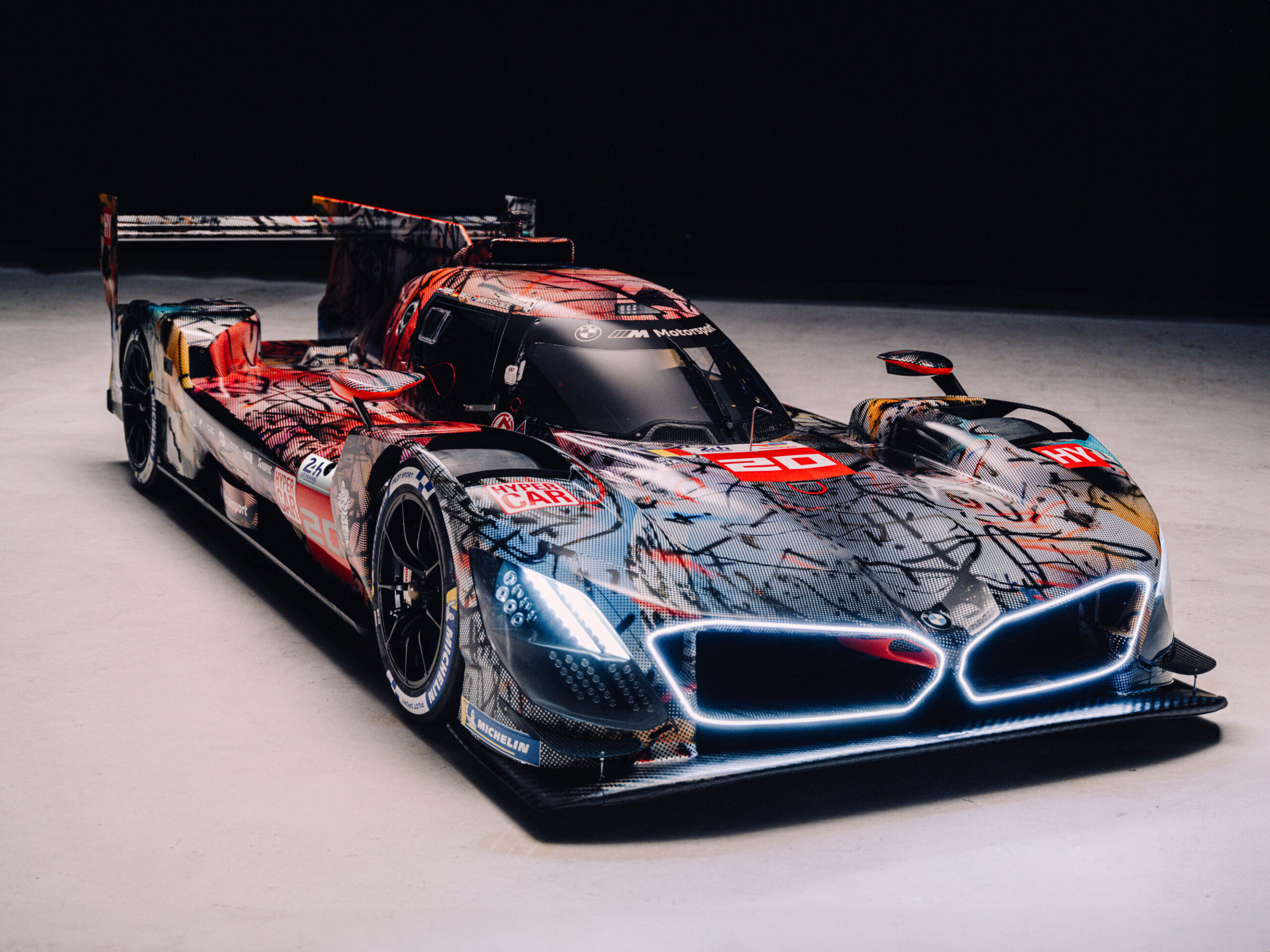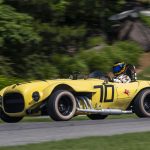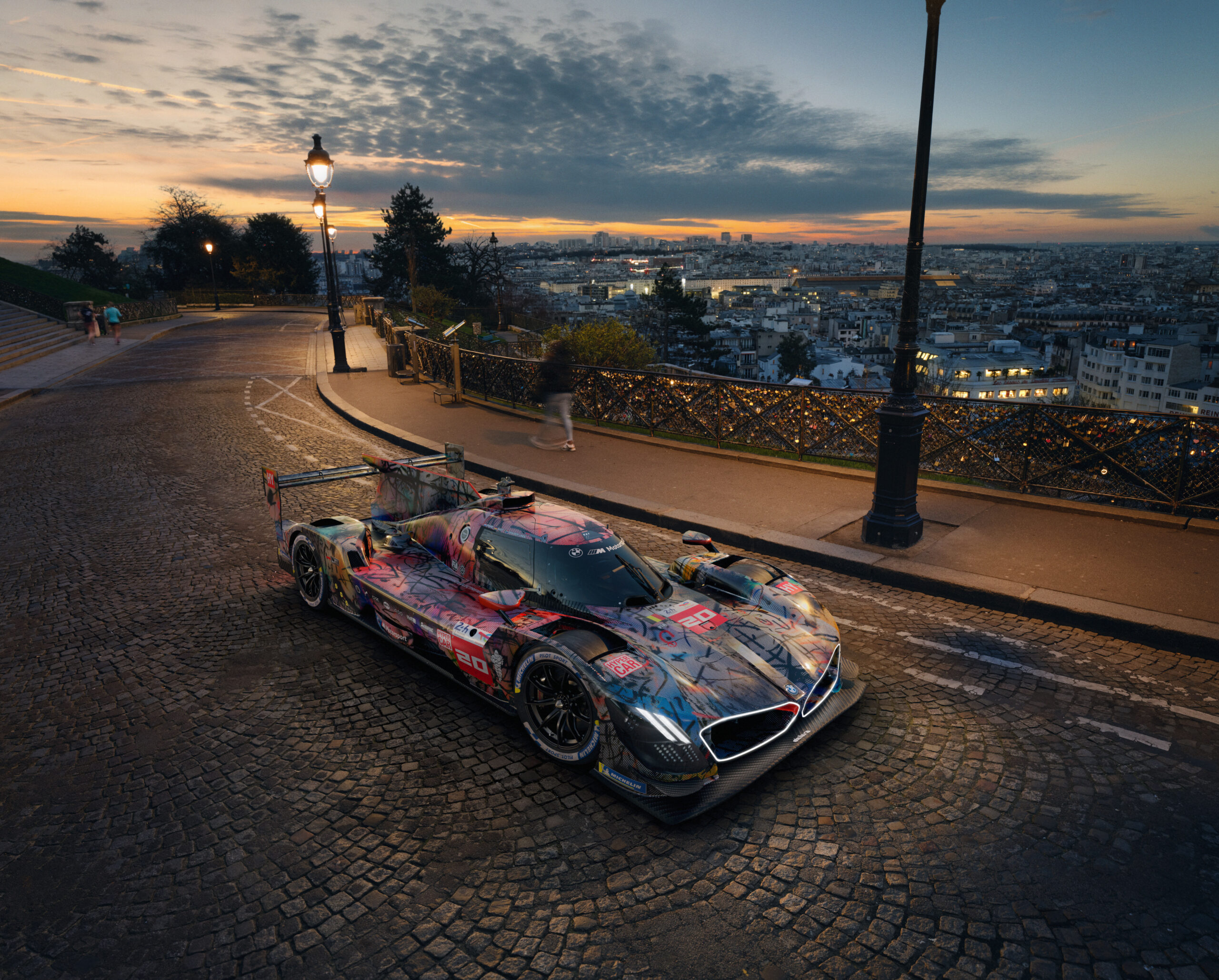Alexander Calder was best known for his sculptures, not for his painting, but near the end of his career some of his paint jobs were hard to ignore. In 1973 he was contracted by Braniff Airways to paint one of its four-engine DC-8 jets. The bright, cheerful result was dubbed “Flying Colors.”
In 1975, Hervé Poulain, a gentleman race car driver, commissioned Calder to use his imagination and paint a BMW 3.0 CSL that Poulain would race in the 24 Hours of Le Mans that year. It became the first of 20 official BMW Art Cars. It was also one of Calder’s last works; he died in 1976.

BMW Art Car number 20 recently made its debut at the Centre Pompidou in Paris. Designed by New York-based contemporary artist Julie Mehretu, the 600 bhp BMW M Hybrid V8 racer will compete in the 2024 24 Hours of Le Mans on 15-16 June, carrying the number 20. Drivers will be Sheldon van der Linde, Robin Frijns and René Rast.
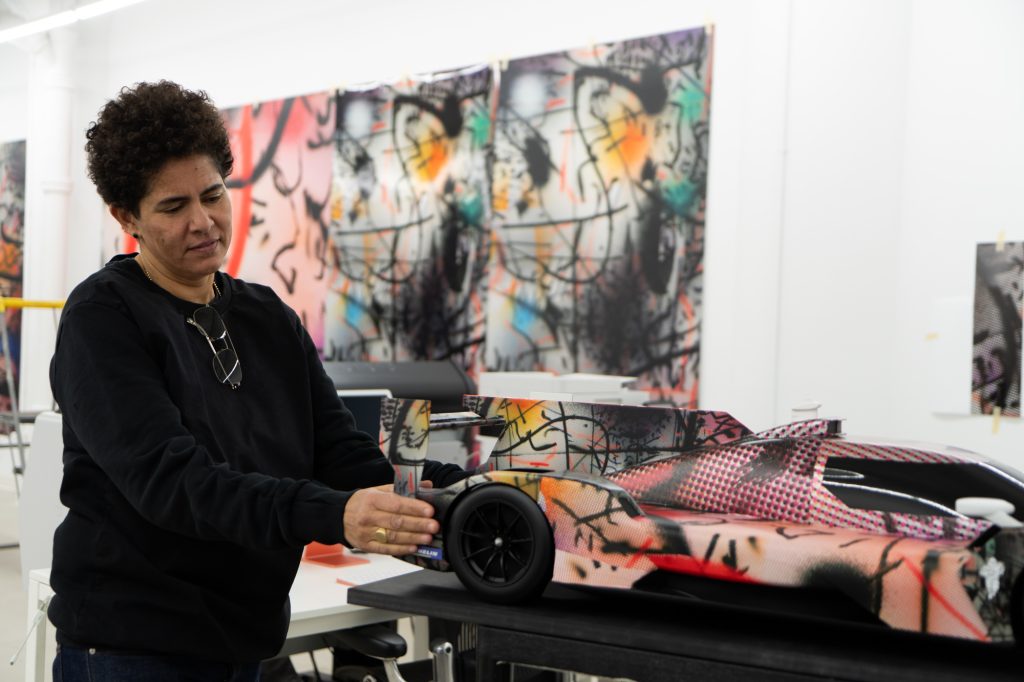
Mehretu, 53, was named one of Time’s 100 Most Influential People in 2020. Last October Mehretu, who was born in Ethiopia, broke the auction record for an African artist at Sotheby’s Hong Kong when her piece Untitled sold for $9.32 million (£7.3m).
Mehretu attended the Rolex 24 at Daytona last January, and watching the BMWs race provided some inspiration. “Designers, engineers, aerodynamicists and so many other creative minds are working on taking this vehicle to its extreme,” she says. “When it goes out on the racetrack now, so many dreams will be fulfilled.”

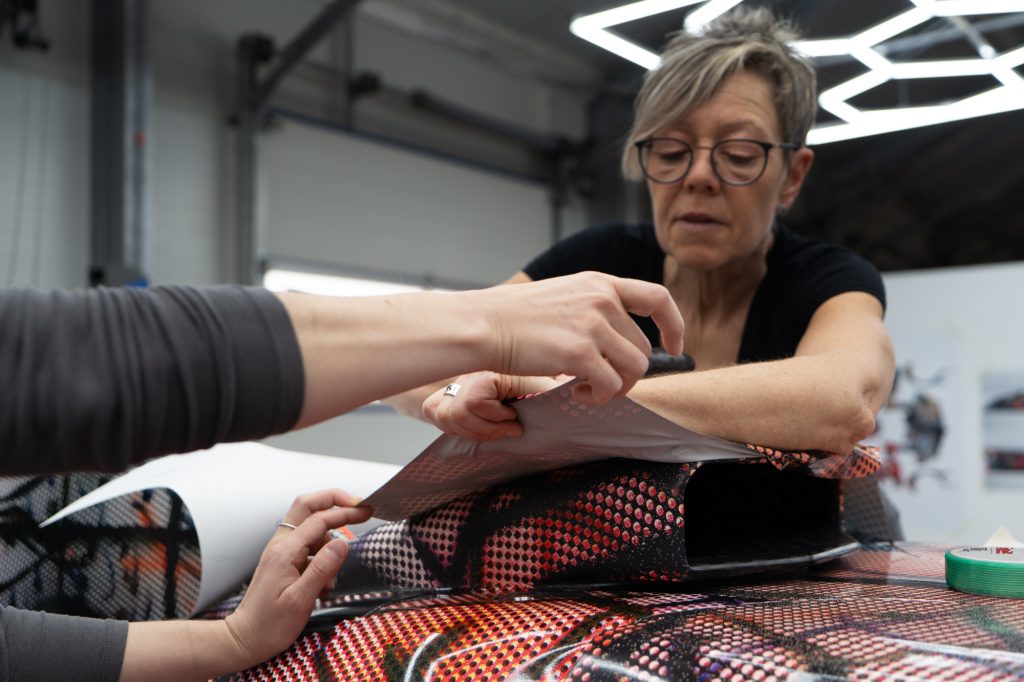
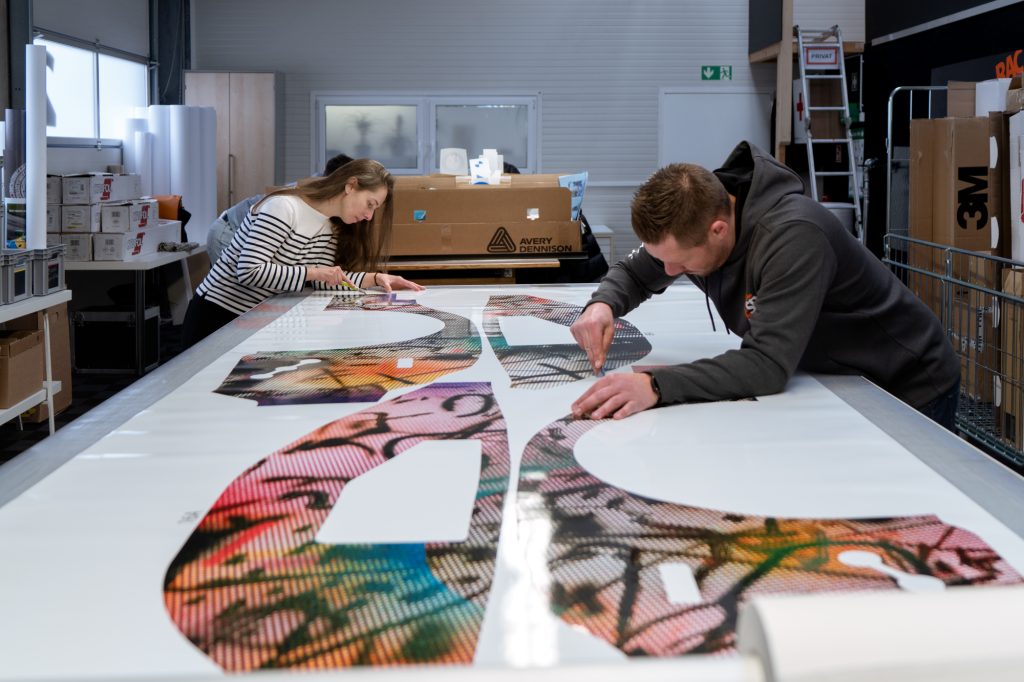
The car’s abstract visual form is the result of digitally-altered photographs, which are superimposed in several layers of dot grids, neon-colored veils and the black markings characteristic of Mehretu’s work.
“In the studio, where I had the model of the BMW M Hybrid V8, I was just sitting in front of the painting and I thought: What would happen if this car seemed to go through that painting and becomes affected by it?” Mehretu says. “The idea was to make a remix, a mash-up of the painting. I kept seeing that painting kind of dripping into the car. Even the kidneys of the car inhaled the painting.” She employed 3D mapping to apply the artwork to the contours of the car.
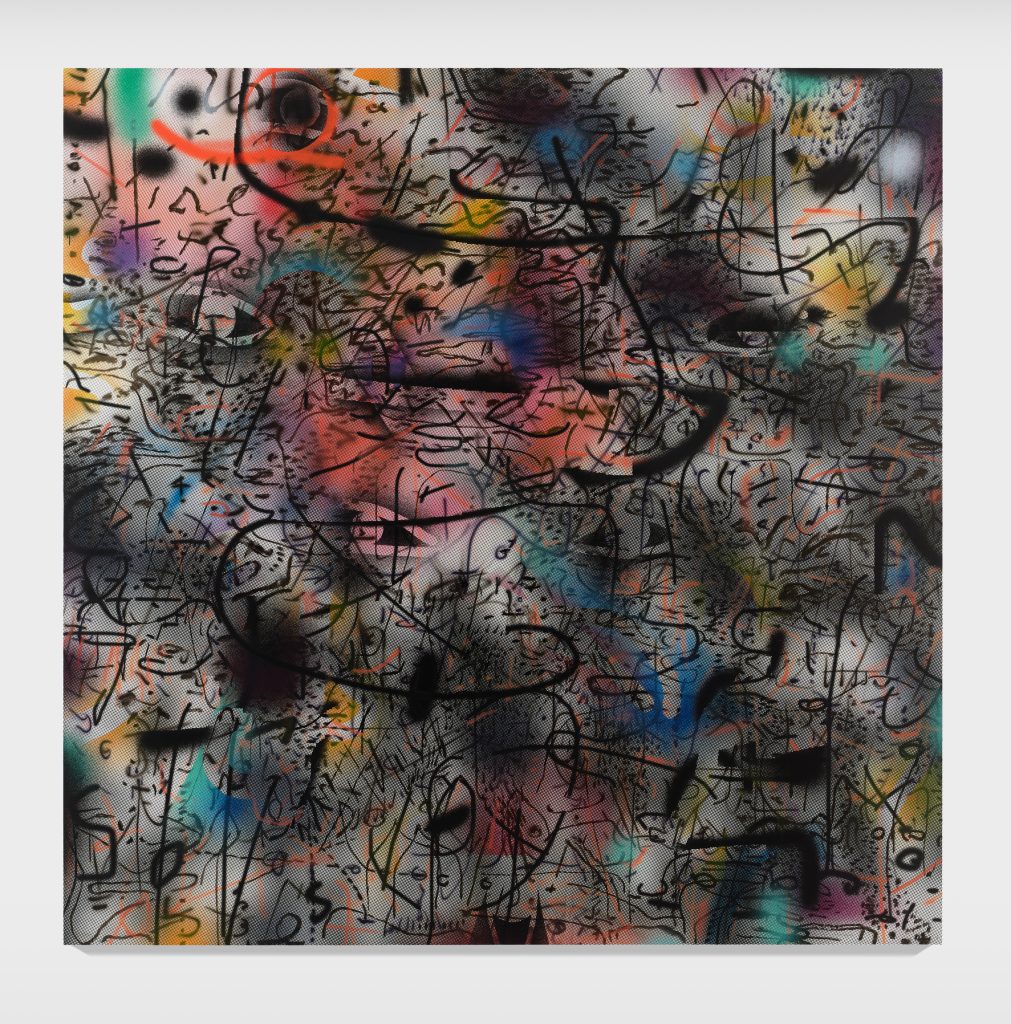
Art Car artists are chosen by a panel of international judges. Perhaps the most famous BMW Art Car is number 4, created when artist Andy Warhol applied the paint himself, rather than do what most Art Car artists do: Paint a model of the car, and have the full-sized BMW colored separately. “I attempted to show speed as a visual image,” said Warhol, who died in 1987 at the age of 58. “When an automobile is really traveling fast, all the lines and colors are transformed into a blur.” Warhol took the speed aspect literally, as he applied 13 pounds of paint to the BMW M1 in just 28 minutes. The car went on to finish sixth overall at the 1979 24 Hours of Le Mans.
Indeed, the first four Art Cars all competed at Le Mans, a trend broken in 1982 when Austrian artist Ernst Fuchs painted flames on a stock BMW 635 CSi for Art Car number 5. The Le Mans tradition was revived for Art Car number 15 in 1999 when American artist Jenny Holzer, known primarily for her words, applied some to her artwork. The BMW V-12 LMR went to Le Mans with PROTECT ME FROM WHAT I WANT emblazoned on the top of the race car, LACK OF CHARISMA CAN BE FATAL on the rear wing, and THE UNATTAINABLE IS INVARIABLY ATTRACTIVE on the driver’s side bodywork.
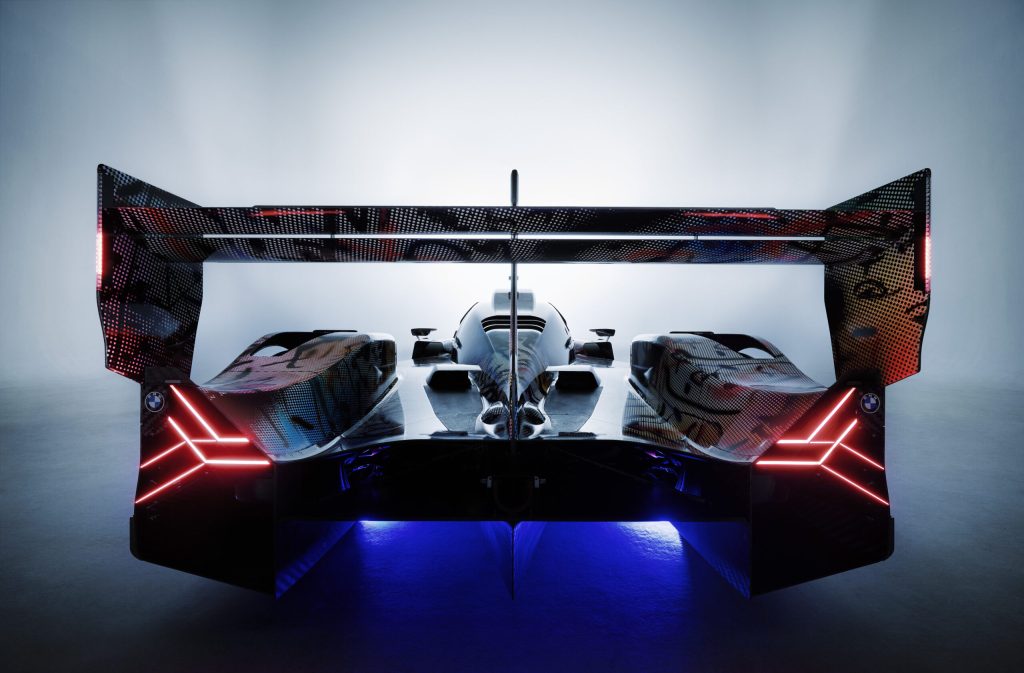
Leading up to this year’s 24 Hours of Le Mans, Mehretu’s Art Car will make an appearance at the Concorso d’Eleganza at Villa d’Este in Italy’s Lake Como on its way to the track in France. As part of the exhibition for historic vehicles organized by the BMW Group and the Grand Hotel Villa d’Este, Mehretu herself will present the 20th edition of the BMW Art Car Collection.
It will be on the grounds of the Villa Erba, also on Lake Como, together with the BMW Art Cars by Calder (1975), Frank Stella (1976), Roy Lichtenstein (1977), Warhol (1979), Holzer (1999) and Jeff Koons (2010), which all made their race debuts at Le Mans.
For a look at all the BMW Art Cars, click here.
